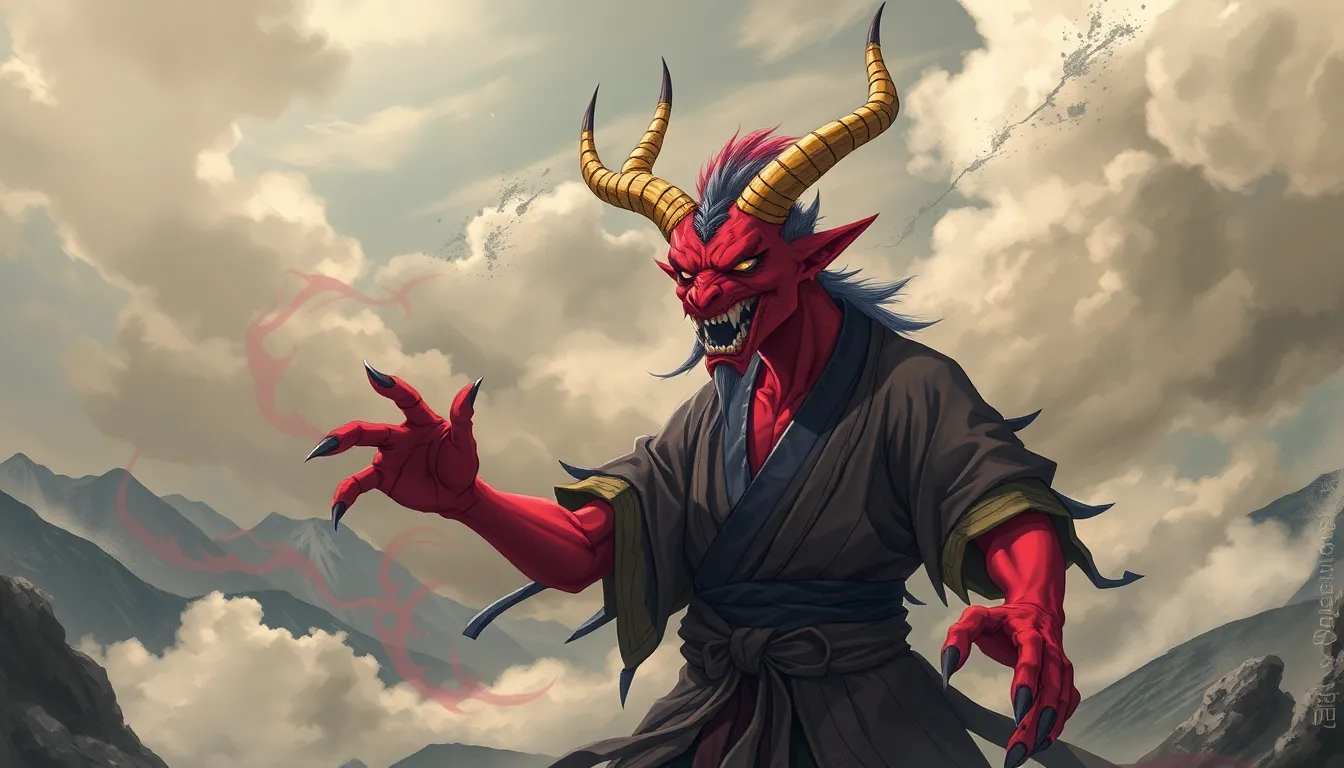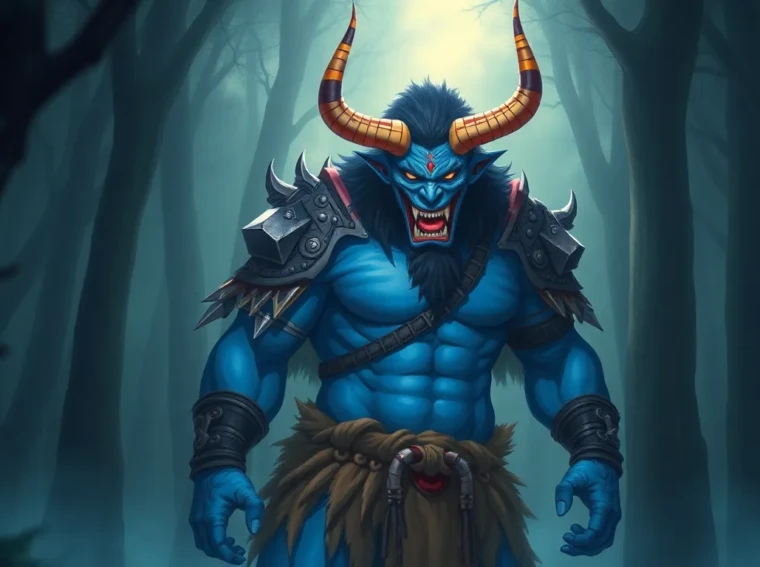Anime has a unique ability to blend fantasy with cultural folklore, and one of its most intriguing elements is the depiction of oni. These mythical creatures, often portrayed as fierce demons or ogres, have captured the imagination of fans worldwide. With their vibrant designs and complex personalities, oni serve as both antagonists and allies in various storylines, adding depth to the narrative.
In the realm of anime, oni symbolize more than just evil; they embody the struggle between good and bad, often reflecting the inner conflicts of the characters they interact with. As the popularity of anime continues to soar, understanding the role of oni enriches the viewer’s experience, offering insights into Japanese culture and mythology. Dive into the fascinating world of anime oni and discover how these captivating beings shape the stories that resonate with audiences around the globe.
Anime Oni
Oni serve as crucial elements in anime, embodying rich cultural narratives deeply rooted in Japanese folklore. These mythical creatures blend traditional motifs with modern storytelling, allowing viewers to appreciate their complex roles.
Origins of Oni in Japanese Folklore
Oni trace their origins to ancient Japanese folklore, where they are depicted as supernatural beings associated with disaster, darkness, and chaos. Often represented with red or blue skin, horns, and sharp claws, oni symbolize the fears and challenges within human nature. Various stories from the Edo period illustrate oni’s role as both antagonists and protectors, showcasing their dual nature. Such folklore includes accounts of oni terrorizing villages or reforming into benevolent figures. This complexity highlights their impact on moral lessons within Japanese culture.
Evolution of Oni in Anime
Oni have transformed significantly within anime, evolving from traditional folklore representations to reflect contemporary themes and narrative dynamics. Early anime often portrayed oni solely as antagonistic forces, emphasizing their monstrous traits and destructive behaviors. However, modern portrayals present oni as multifaceted beings, exploring their motivations and inner struggles. Titles like Demon Slayer and My Hero Academia offer nuanced interpretations, where oni are depicted with human-like emotions, forming connections with main characters. This evolution reflects broader themes in anime, such as redemption, the capacity for change, and the confrontation of one’s demons, thus enriching viewer engagement and cultural understanding.
Characteristics of Anime Oni

Anime oni exhibit distinct physical attributes and personality traits that contribute to their complex representation in stories. Understanding these characteristics enhances viewers’ appreciation of their roles within narratives.
Physical Attributes
- Skin Color: Oni often feature vibrant skin shades, including red, blue, or green. These colors signify their supernatural nature.
- Horns: Oni are characterized by prominent horns on their heads, with styles varying across different anime genres. The horn shapes can indicate the oni’s personality or status.
- Fangs: Sharp fangs represent their ferocity and predatory behavior, reinforcing their demonic attributes.
- Claws: Long, claw-like fingers demonstrate their potential for aggression, emphasizing their role as formidable beings.
- Clothing: Oni frequently wear striking garments, such as tattered loincloths or elaborate armor, reflecting their cultural background and battles fought in the past.
Personality Traits
- Aggressive: Many anime oni display traits of aggression and a thirst for battle, often portrayed in conflicts with human characters.
- Mischievous: Some oni possess a playful or mischievous side, engaging in trickery and causing chaos for entertainment.
- Complex: Modern interpretations showcase oni as multi-dimensional characters, grappling with their emotions and histories, often seeking redemption.
- Loyal: Certain oni exhibit deep loyalty to their allies or masters, adding layers to their relationships within the narrative.
- Evolving: Oni often evolve throughout the story, reflecting personal growth and changes in motivations, resonating with themes of acceptance and understanding.
Popular Anime Featuring Oni
Various anime series highlight the fascinating and complex nature of oni, showcasing their varying roles in storytelling. Below are notable titles and key characters that exemplify the presence of oni in anime.
Notable Titles
- Demon Slayer: This series features powerful oni that embody human fears and challenges, blending traditional folklore with modern narrative. The story revolves around the protagonist’s journey to save his sister from an oni curse.
- My Hero Academia: Inclusivity of oni in this series illustrates their dual nature. Characters like Shigaraki reveal complexity and moral ambiguity, showcasing oni as both foes and allies in the hero’s journey.
- InuYasha: The anime portrays numerous oni, emphasizing their ties to Japanese mythology. InuYasha himself grapples with his oni heritage and the struggle for self-acceptance, making the series a compelling exploration of identity.
- Blue Exorcist: This series blends action and fantasy with themes of redemption. The protagonist, Rin, is the son of a powerful oni and confronts the challenges of his heritage while aiming to break free from the stigma associated with his lineage.
Key Characters
- Kanao Tsuyuri (Demon Slayer): As a skilled demon slayer, she faces various oni while exploring her identity and purpose, highlighting their emotional depth and moral conflicts.
- Shigaraki Tomura (My Hero Academia): A key antagonist, Shigaraki embodies the struggles and complexities of an oni. His character arc emphasizes themes of loss, transformation, and the quest for power.
- InuYasha: The half-oni protagonist symbolizes the conflict between human and demonic traits. InuYasha’s journey illustrates the battle for acceptance, showcasing the intricate nature of oni.
- Rin Okumura (Blue Exorcist): The son of Satan, Rin navigates the challenges of being part oni, bringing forth issues of identity, acceptance, and redemption throughout his journey.
Cultural Significance of Oni in Anime
Oni in anime carry rich cultural significance, embodying both traditional folklore elements and modern thematic depth. This complexity enables a deeper engagement with viewers, who explore the intersection of mythology and personal narratives.
Symbolism and Themes
Oni symbolize the duality of human nature, representing the struggle between good and evil. They frequently embody societal fears and challenges, making them relevant as symbols throughout various storylines. Themes of redemption, acceptance, and personal growth emerge in narratives featuring oni. For example, in Demon Slayer, the character Kibutsuji Muzan exemplifies the tragic conflict between oppressive power and the desire for redemption. Similarly, My Hero Academia portrays Shigaraki Tomura, whose journey highlights the impact of trauma and moral ambiguity. These themes resonate with audiences, encouraging reflection on personal and societal struggles.
Impact on Audience Perception
Oni influence audience perception by challenging preconceived notions of good and evil. They often act as catalysts for character development and plot progression. Their multifaceted depiction fosters empathy and understanding, allowing viewers to connect with characters on deeper levels. For instance, InuYasha frames the titular character’s oni heritage as a source of both power and conflict, prompting viewers to reflect on their own identities. As such, oni enrich the narrative landscape of anime, reinforcing cultural themes while inviting audiences into complex emotional journeys.
Conclusion
Oni in anime offer a fascinating glimpse into the complexities of human nature and cultural narratives. Their evolution from mere antagonists to nuanced characters enriches the storytelling experience. By embodying themes of redemption and personal struggle oni challenge viewers’ perceptions of good and evil.
These mythical beings serve as powerful symbols that resonate with audiences on multiple levels. As they navigate their own conflicts oni invite reflection on broader societal issues and personal identities. Engaging with their stories not only enhances appreciation for anime but also deepens understanding of Japanese folklore and its relevance today. Exploring the world of oni opens doors to a richer viewing experience filled with emotional depth and cultural significance.

